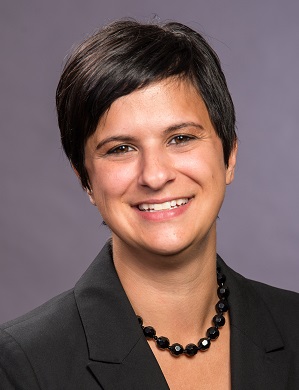Top Single-Use Suppliers Make Standardized Equipment A Reality – Part 1
By Trisha Gladd, Editor, Life Science Connect
 Recently, I wrote an article about the ongoing debate concerning the standardization of single-use equipment and the opinions of some experts in the industry about whether or not it is holding back adoption of the technology. While standardization for end users would mean a plug-and-play approach that would facilitate the implementation of single-use equipment in their facilities, some believe there are suppliers who do not want to move forward with it because they are fearful they will reduce or eliminate their ability to differentiate themselves and remain competitive. However, the argument may be a moot point soon. This is because some of the biggest names in the industry are joining forces to develop a solution intended to catapult the movement forward by giving users the ability to order standardized single-use equipment as early as this year.
Recently, I wrote an article about the ongoing debate concerning the standardization of single-use equipment and the opinions of some experts in the industry about whether or not it is holding back adoption of the technology. While standardization for end users would mean a plug-and-play approach that would facilitate the implementation of single-use equipment in their facilities, some believe there are suppliers who do not want to move forward with it because they are fearful they will reduce or eliminate their ability to differentiate themselves and remain competitive. However, the argument may be a moot point soon. This is because some of the biggest names in the industry are joining forces to develop a solution intended to catapult the movement forward by giving users the ability to order standardized single-use equipment as early as this year.
A Story Of David And Goliath
In 2012, David Wolton, biotechnology consultant at PM Group, an international engineering design, architecture, project, and construction management firm, was tasked by his company to come up with a concept design for a factory, comprised mainly of disposables. Wolton decided to use Visio to design the assemblies, focusing mainly on connectivity and tubing length. This was then used to quickly create a plan for the facility. From his own experience in the industry, he knew the ability to do this would be a valuable tool for other pharmaceutical companies facing the same task. Wolton also knew if he could convince the industry’s single-use suppliers to use these same designs when working with customers, users would no longer need to go through the arduous task of coming up with a customized design for their facility, locking them into one supplier. He explains, “We realized we were onto something because everybody was focusing on standardization of materials and procedure, not standardization of design.” The realization that this idea could offer a solution to a Goliath-sized industry problem gave this David the confidence he needed to take his idea to the masses, which he did at ISPE’s 2013 annual meeting in Washington.
During a conference presentation, Wolton introduced this concept as a way to standardize single-use equipment across the industry and give users the ability to use parts from multiple suppliers in their facility, if they so choose. The feedback was both positive and encouraging, so with 260 parts designed to “connect like one big Lego set,” Wolton and his team started working with multiple single-use suppliers in the industry to bring the idea of single-use equipment standardization to fruition.
The first supplier Wolton reached out to was JM Separations BV, an engineering, design, and manufacturing company that provides single-use operation units for both the upstream and downstream processes (under the trade name JM Bioconnect). “I had worked with JM Separations BV in my previous operations role and they were always fast to respond to unusual requests,” says Wolton. “So when an opportunity surfaced to test the system, they were the supplier of choice. Eventually, we began work with Sartorius, followed by five other single use suppliers.” As the project grew, Wolton and his team started to consider how they would present this to industry, and while working with JM Bioconnect, the concept of creating a “store” of these standardized parts on each supplier’s website became the very exciting solution. “All of a sudden, we realized we could have a global reach with this. In effect, you can have a standardized facility, using standardized parts, and then you can interchange those parts with up to six different suppliers, so there’s more choice for the buyer and increased opportunities for the supplier,” explains Wolton.

When it comes to standardization, Heaven believes the biggest challenge is that every supplier wants the standardized design to be their design. However, he says what makes Wolton’s solution so clever is that the designs being standardized are not existing supplier designs, which doesn’t put competitors in a position to buy from one another. “That’s the reason this works, because PM Group sits on the other side of that and they’re just interested in putting the solution in place, without favoring a particular supplier,” he explains. “What this means is they know in order to make this a relatively level playing field, they can’t use specific parts and components that would inhibit one supplier over another.” By mass producing parts, Heaven says suppliers will be able to reap the benefits of a more efficient business and lower market cost and then pass that down to the user.
While the PM Group solution does eliminate the competition for a supplier to have their designs be “the” designs, there is still the remaining concern that standardizing equipment takes away the supplier’s ability to differentiate themselves in a heavily competitive market. For this, Heaven says having a different design is not the only way for a supplier to stand out. “Differentiation comes not only from the products, but also from the technical resources and the validation that you provide around it,” he explains. “It’s very easy to sell a bag for a simple application, but what can make a supplier stand out is their knowledge and understanding of that bag, the complex interactions of the materials of contact, how that is managed, and how to control the supply.”
Mark van Trier, owner and director of JM Separations BV, adds that while the designs do need to stay the same, suppliers will be able to modify some aspects while still making them interchangeable, such as type of tubing, type of plastic, etc. “Every company has its own rules and own demands and requirements,” he says. “A lot of drawings that are on our website can be modified, in order to give the customer a very good direction of where they can go and develop their process.” Customization is a challenge PM Group is likely to encounter, as suppliers continue to be faced with change requests. However, Heaven believes providing appropriate direction to the end user will allow them to avoid unnecessary changes. “It’s really making a full embrace of the technology and weighing the benefits of what they want and what they actually need,” he says. “The supplier needs to guide the customer or they may end up carrying through mistakes that are 20 years old in the process, because someone who’s been in their job a long time wants to do it exactly the same way they always have.”
Lowest Price Wins?
When I first spoke with Wolton about this site, one of the first things I asked is – won’t the cheapest price win out every time? If an end user is faced with six different prices, why would they ever pick anything other than the one with the lowest price tag? He made it very clear this is most certainly not the case, which he’s seen demonstrated by clients they’re already working with. “These clients may only have a few suppliers, but those are the suppliers they prefer to work with because they have a good relationship with them. Now, we have no intentions of trying to persuade them away from those suppliers, because they like the local reps and they like the products,” he explains. “However, they will have six prices for a part that those two suppliers sell, giving them the option to go with someone else.”
He compares it to owning and buying parts for a Mercedes at the turn of the last century. Originally, you had to buy the tire from Mercedes-Benz as they made the car and the tire. Then the concept of tire codes was created, and while they now had the opportunity to buy a non-Mercedes tire, owners still went with the brand they knew and trusted. “All we're doing is exactly the same,” explains Wolton. “We're providing standardization, but the end user still buys the product on their perception of quality, price, and service.”
Even customers who do not already have an established supplier will still have more than price to consider when selecting the best part for their project. “We are planning that each part we offer will come with a quality dossier, so customers will be able to check what quality standards the supplier is using to make the part,” notes Wolton. “It's very much down to what level of quality is appropriate for the application, as others may require a higher quality level than others. However, regardless of the level of quality needed, users will know they'll be able to buy that part and it'll be able to connect to everything else.”
In Top Single-Use Suppliers Make Standardized Equipment A Reality – Part 2, Jeff Johnson, new technology lead at Merck, and Guido Ragetlie, principal scientist at Janssen Biologics, discuss their thoughts on this project, as well as what impact it could have on the industry, if adopted.
